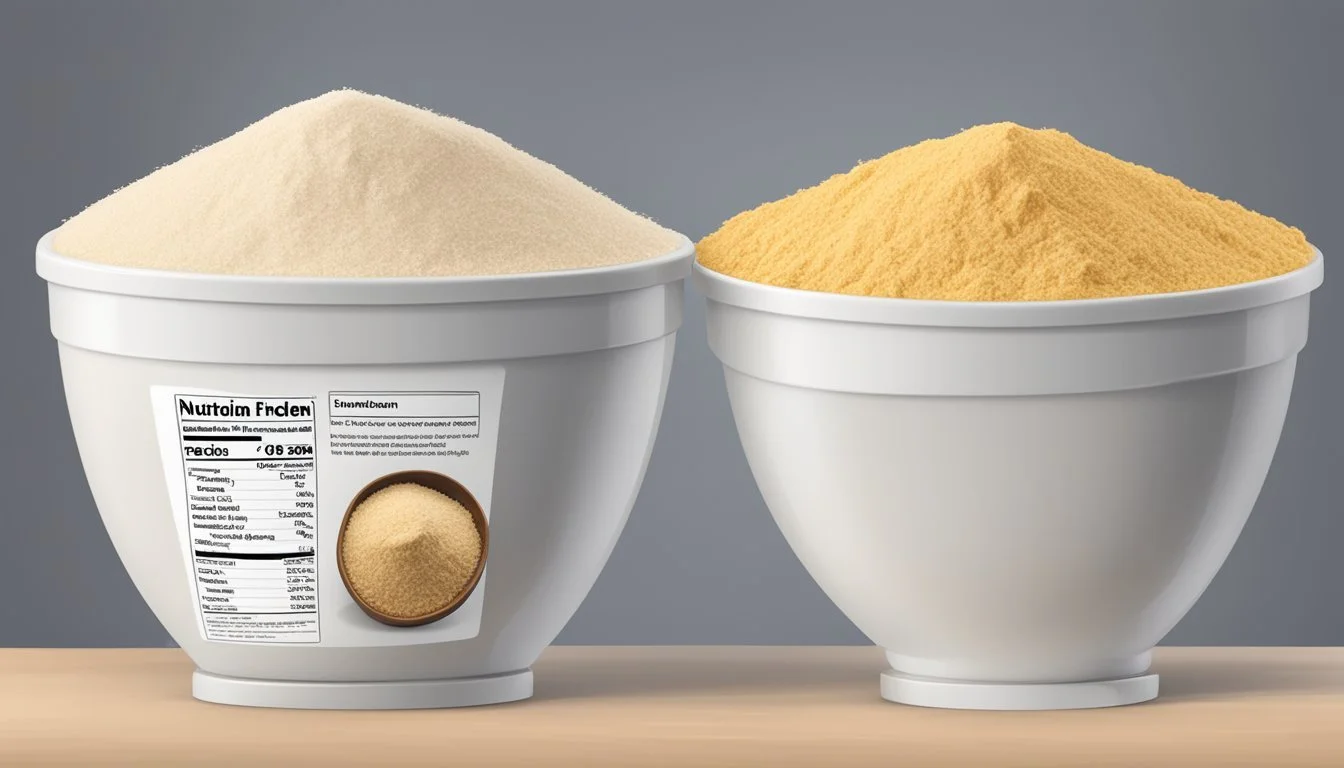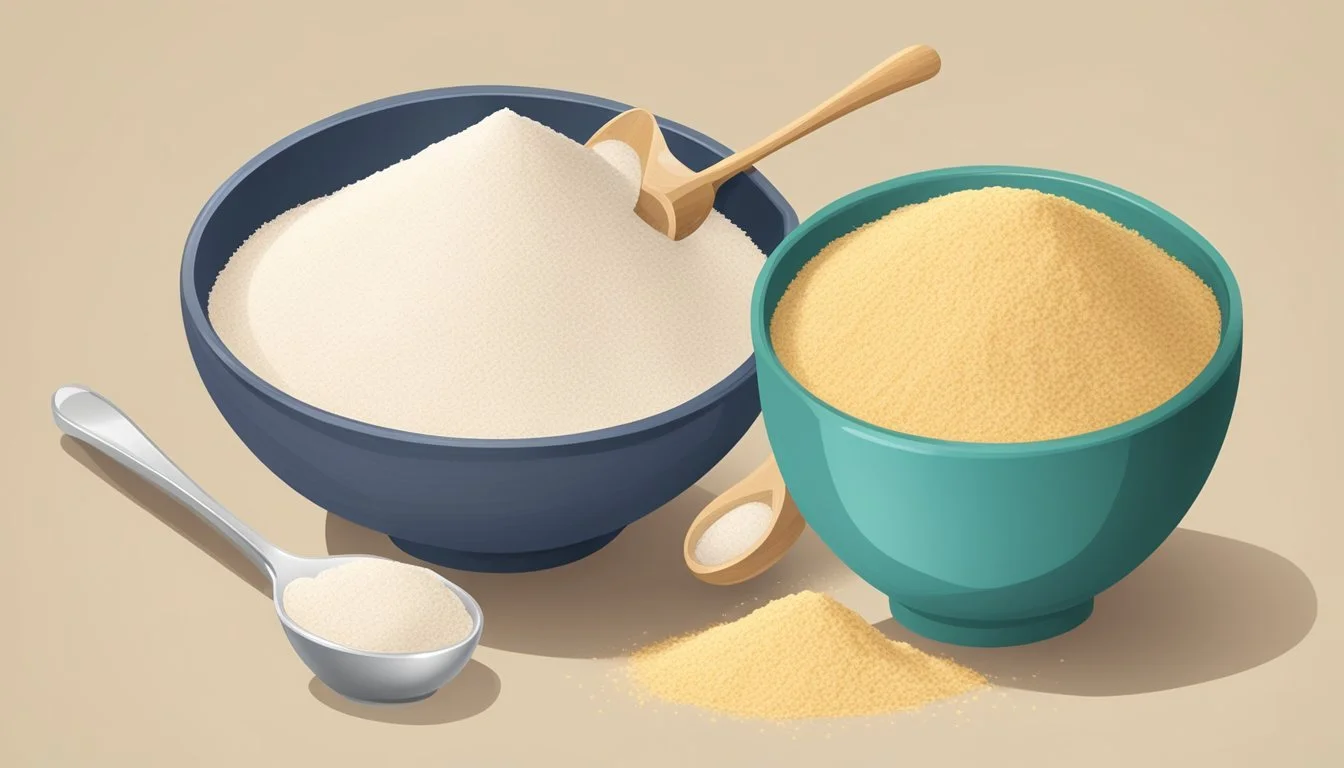Is Coconut Flour a Nutritious Alternative to Wheat Flour?
Understanding Its Health Benefits
Coconut flour has emerged as a popular alternative to wheat flour, especially among those with specific dietary requirements or preferences. Derived from the dried, ground flesh of coconuts, it is naturally gluten-free and boasts a higher fiber content than its wheat-based counterpart. This increased fiber can contribute to a slower absorption of carbohydrates, reducing the rise in blood sugar levels after meals—a characteristic that may make coconut flour appealing to individuals managing their glycemic response.
Despite its potential benefits for blood sugar regulation, coconut flour’s composition alters how it behaves in cooking and baking. Due to its high absorbency, recipes must be adjusted accordingly. But beyond its practical use in the kitchen, the nutritional profile of coconut flour suggests a range of health benefits. High in protein and healthy fats, it may support weight management and digestive health. These nutritional advantages position coconut flour as a nutrient-dense option for those seeking alternatives to traditional wheat flour.
Nutritional Comparison
When comparing coconut flour to wheat flour, one will find distinct differences in their nutritional profiles, including macronutrients, vitamin and mineral content, caloric values, and health benefits.
Macronutrient Content
Coconut flour is high in fiber and healthy fats, while being lower in carbohydrates than wheat flour. It also contains a moderate amount of protein.
Fiber: Coconut flour contains significantly more fiber, with some brands providing up to 10 grams per serving compared to wheat flour's approximate 2.7 grams.
Protein: Both offer similar amounts of protein, generally around 6 grams per serving.
Carbohydrates: Coconut flour has fewer carbohydrates, making it suitable for a low-carbohydrate diet.
Vitamin and Mineral Content
Coconut flour is an excellent source of iron and potassium, while wheat flour is typically enriched with B vitamins and minerals such as magnesium and phosphorus.
Iron: Coconut flour provides about 11% of the Daily Value per serving.
Potassium: Offers about 13% of the Daily Value per serving.
Wheat flour often has added vitamins and minerals to enhance its nutritional profile.
Caloric Value
The caloric value of coconut flour is generally higher due to its fat content; however, the fiber in coconut flour can contribute to a feeling of fullness, potentially aiding in weight loss and reducing overall calorie consumption.
Calories per serving:
Coconut Flour: ~120 calories
Wheat Flour: Calories can vary, with refined versions being lower, but less nutritious.
Health Benefits
Coconut flour has notable health benefits, especially for maintaining stable blood sugar levels, due to its low glycemic index. The high fiber content can support digestive health and may contribute to heart health by helping to manage cholesterol levels.
Conversely, whole wheat flour's health benefits are largely attributable to its B vitamins, aiding metabolism, and the presence of fiber for digestive health. It's also associated with a reduced risk for chronic diseases, benefiting the heart and maintaining stable energy levels.
Dietary Considerations
When comparing coconut flour to wheat flour from a nutritional perspective, it's important to consider their effects on various dietary needs, such as gluten content, carbohydrate impact, and fiber content.
Gluten Content and Sensitivity
Coconut flour is gluten-free, making it a safe choice for individuals with celiac disease or non-celiac gluten sensitivity. In contrast, wheat flour contains gluten, a protein that can cause adverse reactions in these populations. Coconut flour's suitability for gluten-sensitive diets makes it a sought-after alternative in baking and cooking.
Carb-Conscious Diets
For those on low-carb diets, such as ketogenic or paleo, coconut flour offers a lower carbohydrate count than wheat flour. Additionally, it has a lower glycemic index, meaning it has a reduced impact on blood sugar levels, which is advantageous for people managing diabetes. This makes coconut flour a popular ingredient among those seeking to follow a low-carb or keto-friendly lifestyle.
Carbohydrate comparison per 100 grams:
Coconut flour: Approximately 18 grams of carbs
Wheat flour: Higher in carbs than coconut flour
Fiber and Digestive Health
Coconut flour is high in dietary fiber, both soluble and insoluble, which aids in digestion and can help relieve constipation. Its high fiber content can also promote the growth of beneficial bacteria in the gut. Conversely, wheat flour typically has less fiber unless it's a whole-grain variety.
Fiber content per 100 grams:
Coconut flour: Approximately 10 grams of fiber
Wheat flour: Lower in fiber compared to coconut flour
In summary, coconut flour provides dietary advantages for those with gluten sensitivity, those following specific low-carb diets, and those looking to increase fiber intake for improved digestive health.
Culinary Uses
Coconut flour has earned its position in the kitchen due to its versatility, particularly among those who favor gluten-free or low-carbohydrate options. Its unique properties require some adjustments in recipes, but it offers a distinctive flavor profile and can contribute significantly to the texture of baked goods.
Baking With Coconut Flour
Coconut flour is highly absorbent and lends a soft, rich texture to baked goods. Due to its dense nature, it often requires more liquid than other flours. When baking goods like bread, cakes, cookies, and muffins, incorporating additional eggs or other wet ingredients helps maintain moisture.
Pancakes and Banana Bread: The flour's absorbency makes it ideal for tender pancakes and moist banana bread.
Baking Adjustments: Always remember to whisk coconut flour to break up any lumps and ensure even distribution in the batter or dough.
Flavor Profile
Coconut flour imparts a mildly sweet and nutty flavor that complements both sweet and savory dishes. Its unique flavor pairs well with ingredients like chocolate, bananas, and nuts in desserts, while also enhancing savory recipes such as soups or pizza crust with a delicate complexity.
Desserts: Enhances sweetness and complexity.
Savory Dishes: Adds a subtle nuttiness.
Substitution Guidelines
Substituting coconut flour for all-purpose flour or almond flour requires a careful guide due to its distinct properties. A general rule is to use about 1/4 of the amount of coconut flour when replacing all-purpose flour. Adjustments to the amount of liquid and eggs are also essential.
Guide:
All-Purpose Flour Coconut Flour Additional Liquid (approx.) 1 cup 1/4 cup 1/4 - 1/3 cup
Note: These ratios can vary between recipes, so it is advisable to look for specific coconut flour recipes for best results.
Non-Baking Recipes
While famous for baking, coconut flour is also a valuable ingredient in cooking. It can serve as a thickener for soups, a component in pizza dough or pie crusts, and as a breading in place of breadcrumbs for a crispy, gluten-free coating.
Soups and Stews: Acts as a thickener without altering flavor significantly.
Pizza and Pie Crusts: Offers a gluten-free alternative with a unique taste.
Breading: Provides a low-carb alternative for a crunchy texture in fried foods.
Practical Tips and Considerations
When incorporating coconut flour into a diet, one should understand its storage nuances, baking behavior, and recipe adaptation to fully benefit from its nutritional profile. Here's a breakdown to navigate these aspects effectively.
Storage and Shelf Life
Coconut flour should be stored in an airtight container to keep it from absorbing moisture and odors. It can be kept at room temperature, but for prolonged shelf life, storing it in the refrigerator or freezer is best. Typically, coconut flour can last for up to six months when stored properly, but one should always check for any signs of spoilage before use.
Working With Coconut Flour
Due to its high absorbency, coconut flour requires more liquid than other flours. For every cup of coconut flour used, one might need to add up to an additional cup of liquid, such as water, coconut milk, or other milk alternatives. Coconut flour is dense, so baked goods will have a heavier texture unless the recipe calls for additional eggs or leavening agents to produce a lighter result. It's crucial to let the batter rest for a few minutes after mixing to allow the coconut flour to absorb the liquid properly.
Creating Your Own Recipes
For those eager to be a recipe developer of coconut flour dishes, it's important to note that this flour is quite versatile. It pairs well with various spices and sugars, allowing for flavorful creations. Coconut flour lacks gluten, which acts as a binding agent in many recipes. Thus, ingredients like eggs or psyllium husk are often needed to provide structure to the dish. When creating recipes, one should consider that coconut flour does not have bran or germ, components prevalent in wheat flour that affect texture and nutritional value.
Adjusting Traditional Recipes
A direct substitution of coconut flour in recipes designed for wheat flour is not advisable due to coconut flour's unique properties. When adjusting traditional recipes, one should use the ratio of about 1/4 cup of coconut flour for every cup of wheat flour and proportionately increase the number of eggs and liquids. This is because coconut flour's absorbent nature impacts the texture and firmness of the final product. Moreover, its mildly sweet taste and flavor can enhance a recipe, reducing the need for added sugar.
Remember, experimentation and small adjustments are key when working with coconut flour. It may take a few attempts to perfect the results, but the nutritious benefits of coconut flour are well worth the effort.
Additional Considerations
When assessing coconut flour as an alternative to wheat flour, one cannot overlook the environmental, health, and economic aspects. These factors can significantly influence consumer choice.
Environmental and Sustainability Aspects
Coconut flour production involves processing the meat of coconuts after the milk has been extracted. Each step from cultivation to flour production can have an environmental impact. Coconuts are typically grown in tropical climates, and their demand can lead to both positive and negative consequences for local ecosystems. The sustainability of coconut crops may depend on farming practices, including the use of water, land, and whether these practices encourage biodiversity or lead to deforestation. In comparison, whole grain wheat production has well-documented environmental impacts, including water usage and the carbon footprint from farming machinery.
Allergies and Intolerances
Coconut flour is a gluten-free alternative, making it a suitable option for individuals with celiac disease or gluten intolerance. However, for those with a coconut allergy, this flour can lead to adverse reactions and should be avoided. Meanwhile, wheat flour can trigger reactions in people with wheat allergies or sensitivities, thus coconut flour might be considered a safe alternative for them.
Dietary Needs and Preferences
Coconut flour is high in fiber and protein and low in carbohydrates, which can be consistent with individuals managing their blood sugar levels or following a low-carb diet. It's important to note that coconut flour has a different nutrient profile compared to whole grain wheat flour, which is rich in plant-based protein and essential nutrients. Dietary preferences, such as a desire for higher fiber content or adhering to a plant-based diet, can influence the choice between coconut and whole grain wheat flour.
Economic Factors
The choice between coconut flour and wheat flour may be influenced by cost and availability. Coconut flour is often more expensive than traditional wheat flour and might not be as readily available in conventional grocery stores. The cost of coconut flour includes importation fees, especially in areas where coconuts are not locally grown, which can make it a less economical choice for some consumers. Availability can also vary depending on regional demand and agricultural conditions, potentially limiting its use as a daily staple in comparison to the widespread accessibility of wheat flour.




